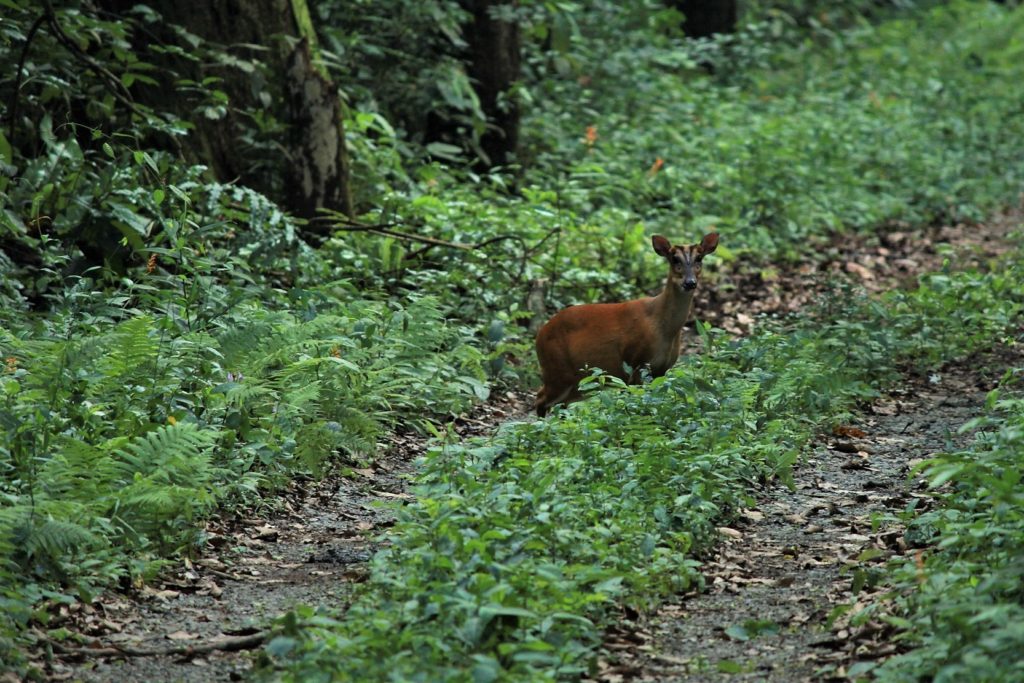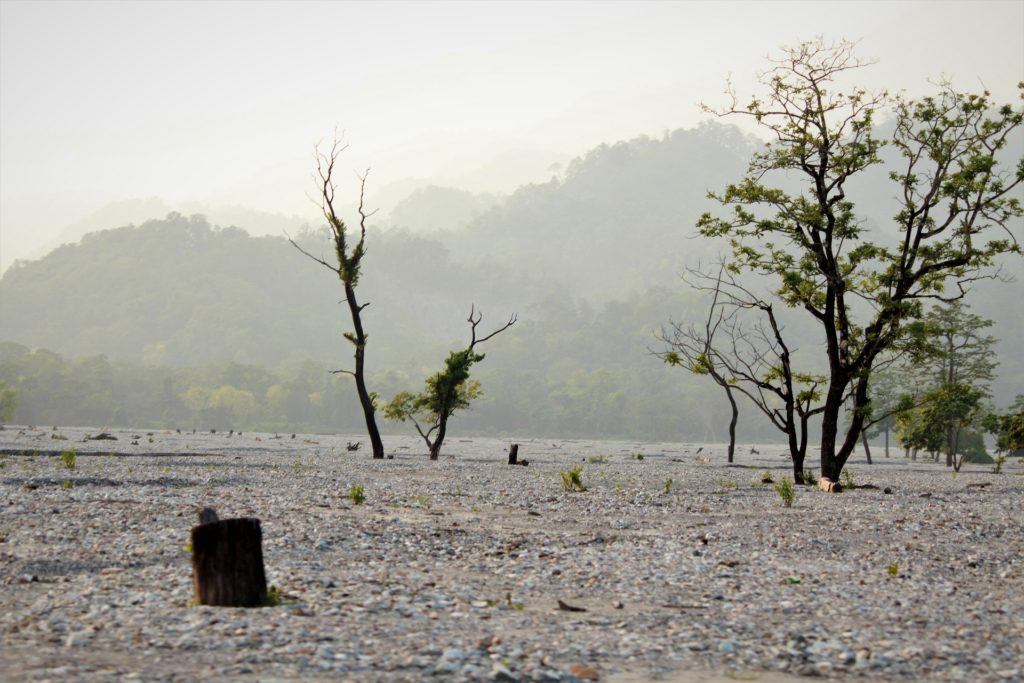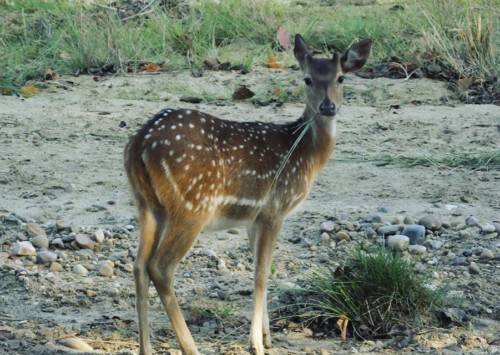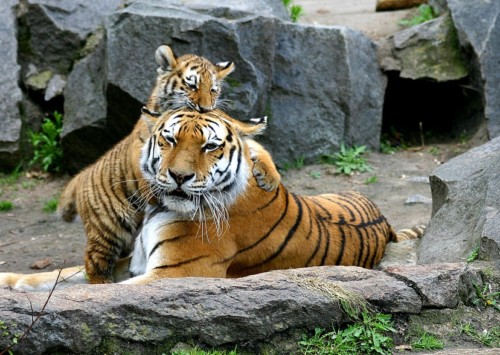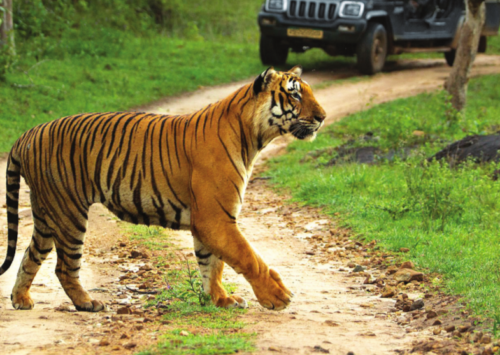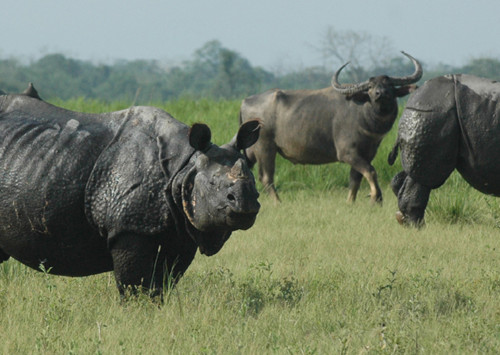A safari in the Buxa Tiger Reserve
The sun often fails to penetrate the dense forests to reach the lands of the Buxa Tiger Reserve as you anticipate wilderness in the core area benched on a typical safari gypsy.
Nestled in the Alipurduar Sub-Division of Jalpaiguri District in West Bengal, the Buxa Tiger Reserve was arguably the 15th tiger reserve in the north-eastern corner of the state bordering Bhutan and Assam. What makes Buxa a scenic extravaganza is perhaps not the anticipation of spotting a mammal in the wilderness but the mystic silence of the forest, the eerie din of the crickets and the hilly landscape at the backdrop of the Jayanti River that forms a natural border between Bhutan and India. The river bed during the early monsoons still partially parched and a full moon lighting up the white bed in between the clouds playing a bizarre hide and seek might add to the enchanting escapade to this lesser known forest of Bengal.
The annual rainfall exceeds 5000 mm and the varied flora and fauna remain an outcome of the moist environment and the sparse population. While the vegetation is classified as mostly tropical forests, the ethnic diversity of the people in this area also makes it an interesting place to explore.
They might surprise you
The Buxa Tiger Reserve is home to a wide range of fauna. As many as 69 species of mammals, 41 species of reptiles, more than 246 species of birds, 4 species of amphibians, 33 species of fishes are listed. However, spotting mammals in this safari can definitely be termed as accidental if not lucky. The guides will tell you stories of herds of elephant rampaging the corn farms and taking occasional cars by surprise, however, we were among the star-crossed ones.
Mrinmoy, a registered guide and conservation worker at the Buxa Tiger Reserve was telling us how sustainable tourism is important for the flora and fauna in this forest. “BTR is called the forest of uncertainties. You never know what you will see and where. We have a low density of tigers, but there are carnivores such as the clouded leopards and the Himalayan black bear. Buxa is also known as an elephant reserve after the Dooars in Eastern India.”
Almost two and half hours inside the thick forests on the gypsies crossing birds, butterflies, and mysterious trees that seem to come straight from some magical novels, we spotted groups of barking deer and wild pigs to satiate our adrenaline. However, the anticipation and the uncanny light and shadow that followed us throughout our safari were riveting and worth remembering.
Nature beyond the fauna
Travellers and tourists have a basic difference in their approach in comprehending a place by its merit. Buxa is a hamlet that gives refuge to your solitary self. You cannot expect touristic pleasures but can always enjoy as a wanderer. A stroll to the historical Buxa Fort is like chalk and cheese as an experience compared to the dolomite caves, locally known as the ‘Mahakal’. While the fort remains reminiscent of the time when freedom fighters back in the British era were detained here as the second most rigorous prison next to the Andaman Cellular Jail, the beautiful stalactites and stalagmites along with the natural waterfalls in the ‘Mahakal’ trek is an experience unlike the usual.
The periphery of the Buxa region has over 34 tea gardens in its southern side which is another serene attraction for a prosaic mind wandering for peace.
The whispering forests, the roaring clouds hitting the tin roofs, the Bhutan Ghat, the blooming orchids and the Jayanti river makes Buxa an irresistible choice for travellers. Rainmatong and Rajabhatkhawa are two other spots of tourist attraction apart from a lesser known temple near a watch tower inhabited by a mystic sadhu who is dwelling there for a decade in solitude.
Eco-tourism
The seducing landscapes of Buxa remain etched to the mind as I board my city-bound train to Kolkata. However, the disappointment that lingered was the gradual ignorance of human activities in areas of natural tranquillity. Can’t we have a civilised approach towards tourism which often gets coined as eco-tourism?
Mrinmoy was not at all happy when he was asked about the tourism prospects of Buxa. He complained reckless attitudes and blames tourism for the lowering density of tigers and other animals in the Buxa Tiger Reserve. “I think tourism is destroying a lot of our natural treasure. I have seen educated people from well to do families throwing plastics and beer bottles randomly while moving around. They don’t realise that an elephant might step on the glasses and get an infection. Tourism will only be successful when the tourists are more conscious about their activities,” he added with a mixed emotion of hope and annoyance.


